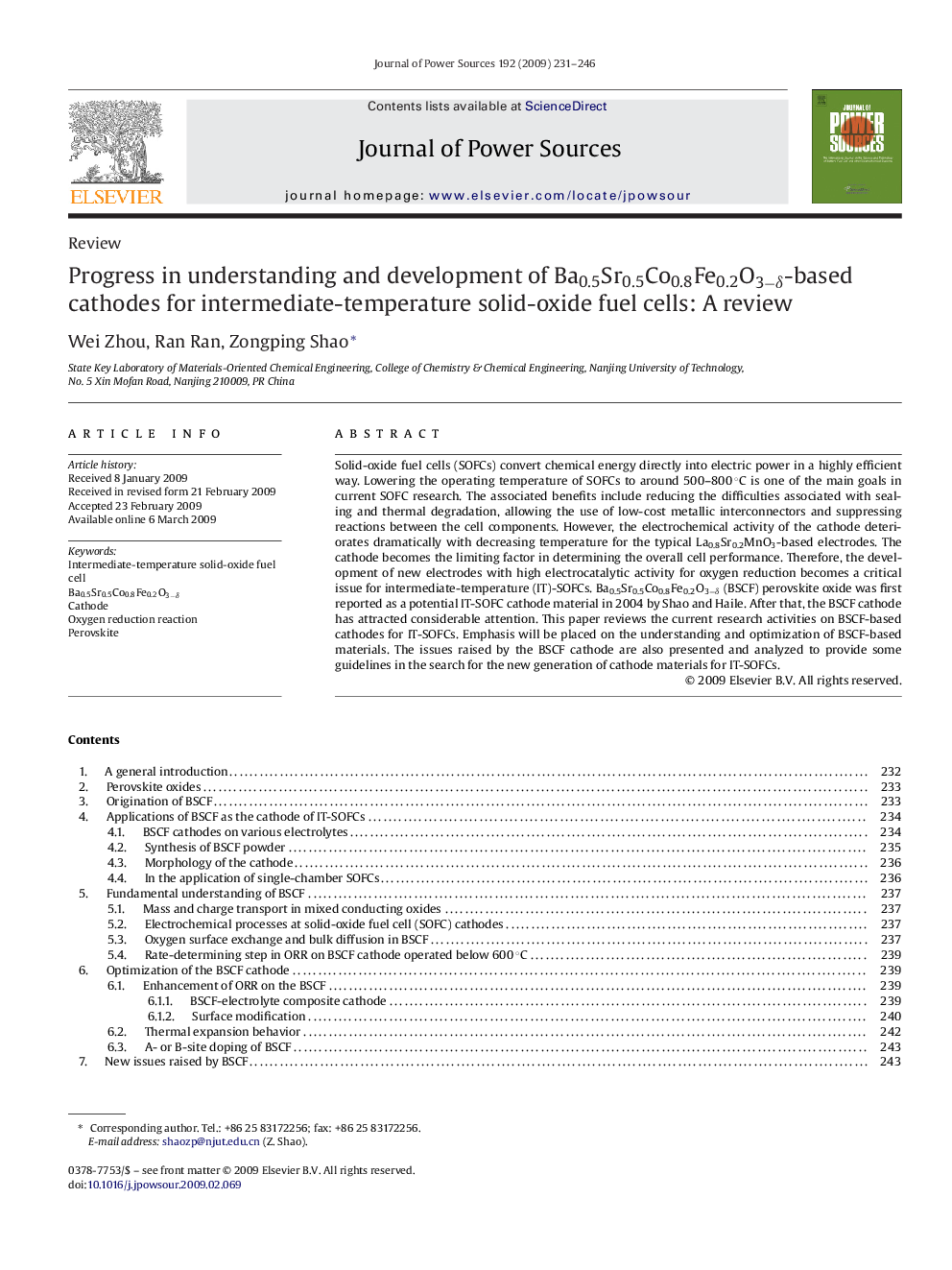| Article ID | Journal | Published Year | Pages | File Type |
|---|---|---|---|---|
| 1294096 | Journal of Power Sources | 2009 | 16 Pages |
Solid-oxide fuel cells (SOFCs) convert chemical energy directly into electric power in a highly efficient way. Lowering the operating temperature of SOFCs to around 500–800 °C is one of the main goals in current SOFC research. The associated benefits include reducing the difficulties associated with sealing and thermal degradation, allowing the use of low-cost metallic interconnectors and suppressing reactions between the cell components. However, the electrochemical activity of the cathode deteriorates dramatically with decreasing temperature for the typical La0.8Sr0.2MnO3-based electrodes. The cathode becomes the limiting factor in determining the overall cell performance. Therefore, the development of new electrodes with high electrocatalytic activity for oxygen reduction becomes a critical issue for intermediate-temperature (IT)-SOFCs. Ba0.5Sr0.5Co0.8Fe0.2O3−δ (BSCF) perovskite oxide was first reported as a potential IT-SOFC cathode material in 2004 by Shao and Haile. After that, the BSCF cathode has attracted considerable attention. This paper reviews the current research activities on BSCF-based cathodes for IT-SOFCs. Emphasis will be placed on the understanding and optimization of BSCF-based materials. The issues raised by the BSCF cathode are also presented and analyzed to provide some guidelines in the search for the new generation of cathode materials for IT-SOFCs.
